
Originally appeared here:
Amazon Personalize launches new recipes supporting larger item catalogs with lower latency


Originally appeared here:
Amazon Personalize launches new recipes supporting larger item catalogs with lower latency


Originally appeared here:
Get started with Amazon Titan Text Embeddings V2: A new state-of-the-art embeddings model on Amazon Bedrock
Feeling inspired to write your first TDS post? We’re always open to contributions from new authors.
Some months, our community appears to be drawn to a very tight cluster of topics: a new model or tool pops up, and everyone’s attention zooms in on the latest, buzziest news. Other times, readers seem to be moving in dozens of different directions, diving into a wide spectrum of workflows and themes. Last month definitely belongs to the latter camp, and as we looked at the articles that resonated the most with our audience, we were struck (and impressed!) by their diversity of perspectives and focal points.
We hope you enjoy this selection of some of our most-read, -shared, and -discussed posts from April, which include a couple of this year’s most popular articles to date, and several top-notch (and beginner-friendly) explainers.

Every month, we’re thrilled to see a fresh group of authors join TDS, each sharing their own unique voice, knowledge, and experience with our community. If you’re looking for new writers to explore and follow, just browse the work of our latest additions, including Thomas Reid, Rechitasingh, Anna Zawadzka, Dr. Christoph Mittendorf, Daniel Manrique-Castano, Maxime Wolf, Mia Dwyer, Nadav Har-Tuv, Roger Noble and Martim Chaves, Oliver W. Johnson, Tim Sumner, Jonathan Yahav, Nicolas Lupi, Julian Yip, Nikola Milosevic (Data Warrior), Sara Nóbrega, Anand Majmudar, Wencong Yang, Shahzeb Naveed, Soyoung L, Kate Minogue, Sean Sheng, John Loewen, PhD, Lukasz Szubelak, Pasquale Antonante, Ph.D., Roshan Santhosh, Runzhong Wang, Leonardo Maldonado, Jiaqi Chen, Tobias Schnabel, Jess.Z, Lucas de Lima Nogueira, Merete Lutz, Eric Boernert, John Mayo-Smith, Hadrien Mariaccia, Gretel Tan, Sami Maameri, Ayoub El Outati, Samvardhan Vishnoi, Hans Christian Ekne, David Kyle, Daniel Pazmiño Vernaza, Vu Trinh, Mateus Trentz, Natasha Stewart, Frida Karvouni, Sunila Gollapudi, and Haocheng Bi, among others.
Thank you for supporting the work of our authors! We love publishing articles from new authors, so if you’ve recently written an interesting project walkthrough, tutorial, or theoretical reflection on any of our core topics, don’t hesitate to share it with us.
Until the next Variable,
TDS Team
Data Science Unicorns, RAG Pipelines, a New Coefficient of Correlation, and Other April Must-Reads was originally published in Towards Data Science on Medium, where people are continuing the conversation by highlighting and responding to this story.
Originally appeared here:
Data Science Unicorns, RAG Pipelines, a New Coefficient of Correlation, and Other April Must-Reads
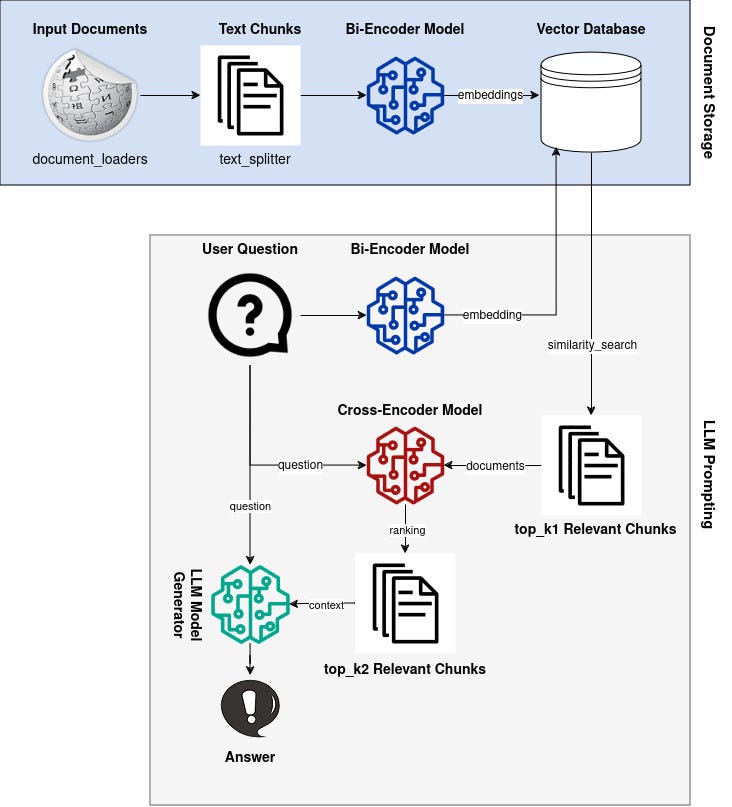
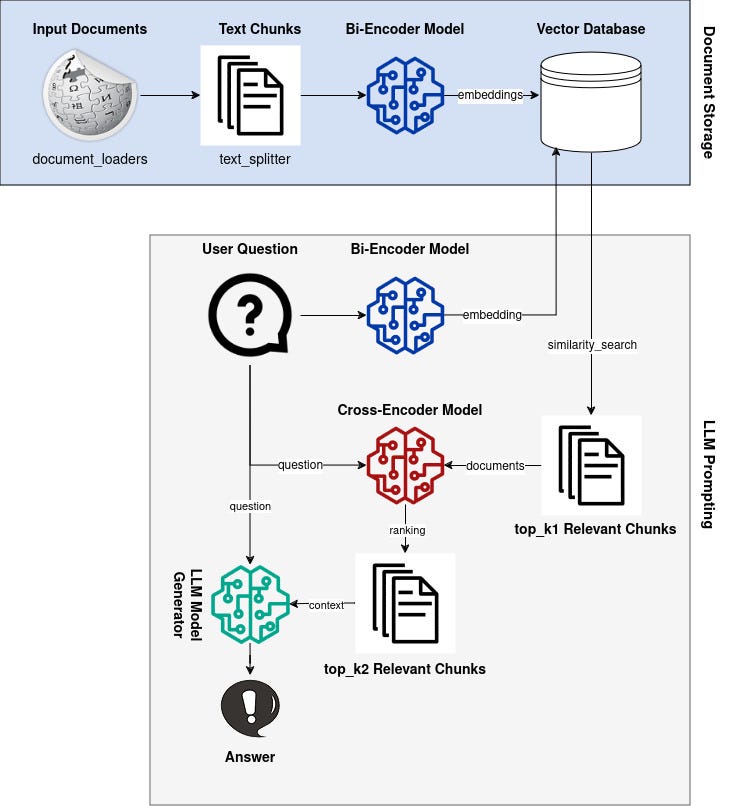
Building an advanced local LLM RAG pipeline with two-step retrieval using open-source bi-encoders and cross-encoders
Originally appeared here:
How to Use Re-Ranking for Better LLM RAG Retrieval
Go Here to Read this Fast! How to Use Re-Ranking for Better LLM RAG Retrieval



I was born and raised in Ecuador. In this country, weather and climate shape our lives. For example, our energy supply relies on sufficient rainfall for hydroelectric power. As a child, I remember having continuous blackouts. Unfortunately, Ecuador has not been resilient. At the time of writing this article, we are experiencing blackouts again. Paradoxically, El Niño Southern Oscillation brings us flooding every year. I love hiking, and with great sadness, I saw how our glaciers have retreated.
Ten years ago, I decided to study for a PhD in meteorology. Climate change and its implications troubled me. It is a daunting challenge that humanity faces in this century. There has been enormous progress in our scientific understanding of this problem. But we still need more action.
When I started my PhD, few researchers used artificial intelligence (AI) techniques. Nowadays, there is a consensus that harnessing the potential of AI can make a difference. In particular, in mitigating and adapting to climate change.
ML and in particular computer vision (CV) empower us to make sense of the massive amounts of available data. This power will allow us to take action. Uncovering hidden patterns in visual data (eg. satellite data) is a critical task in tackling climate change.
This article introduces CV and its intersection with climate change. It is the first of a series on this topic. The article has five sections. First, it presents an introduction. Next, the article defines some basic concepts related to CV. Then, it explores the capabilities of CV to tackle climate change with case studies. After that, the article discusses challenges and future directions. Finally, a summary provides an overview.
Understanding Computer Vision
CV uses computational methods to learn patterns from images. Earth Observation (EO) relies mainly on satellite images. Thus, CV is a well-suited tool for climate change analysis. To understand climate patterns from images, several techniques are necessary. Some of the most important are classification, object detection, and segmentation.
Classification: involves categorizing (single) images based on predefined classes (single labels). Fire detection and burned area mapping use image classification techniques on satellite images. These images provide spectral signatures linked to burned vegetation. Using these unique patterns researchers can track the impact of wildfires.
Object detection: comprises locating objects in an area of interest. The track of hurricanes and cyclones uses this technique. Detecting its cloud patterns helps to mitigate their impact in coastal zones.
Image segmentation: assigns a class to each pixel in an image. This technique helps to identify regions and their boundaries. Segmentation is also referred to as “semantic segmentation”. Since each region (target class) receives a label its definition includes “semantic”. For example, tracking a glacier’s retreat uses this technique. Segmenting satellite images from glaciers allows for tracking their changes. For instance, monitoring glacier’s extent, area, and volume over time.
This section provided some examples of CV in action to tackle climate change. The following section will analyze them as case studies.
Case Study 1: Wildfire detection

Climate change has several implications for wildfires. For example, increasing the likelihood of extreme events. Also, extending the timeframe of fire seasons. Likewise, it will exacerbate fire intensity. Thus, investing resources in innovative solutions to prevent catastrophic wildfires is imperative.
This type of research depends on the analyses of images for early detection of wildfires. ML methods, in general, proved to be effective in predicting these events.
However, advanced AI deep learning algorithms yield the best results. An example of these advanced algorithms is Neural Networks (NNs). NNs are an ML technique inspired by human cognition. This technique relies on one or more convolutional layers to detect features.
Convolutional Neural Networks (CNN) are popular in Earth Science applications. CNN shows the greatest potential to increase the accuracy of fire detection. Several models use this algorithm, such as VGGNet, AlexNet, or GoogleNet. These models present improved accuracy in CV tasks.
Fire detection through CV algorithms requires image segmentation. Yet, before segmenting the data, it needs preprocessing. For instance, to reduce noise, normalize values, and resize. Next, the analysis labels pixels that represent fire. Thus distinguishing them from other image information.
Case Study 2: Cyclone Tracking

Climate change will increase the frequency and intensity of cyclones. In this case, a massive amount of data is not processed by real-time applications. For instance, data from models, satellites, radar, and ground-based weather stations. CV demonstrates to be efficient in processing these data. It has also reduced the biases and errors linked with human intervention.
For example, numerical weather prediction models use only 3%–7% of data. In this case, observations from Geostationary Operational Environmental Satellites (GOES). The data assimilation processes use even less of these data. CNN models select among this vast quantity of images the most relevant observations. These observations refer to cyclone-active (or soon-to-be active) regions of interest (ROI).
Identifying this ROI is a segmentation task. There are several models used in Earth Sciences to approach this problem. Yet, the U-Net CNN is one of the most popular choices. The model design relates to medical segmentation tasks. But it has proven useful in solving meteorological problems as well.
Case Study 3: Tracking Glacial Retreat

Glaciers are thermometers of climate change. The effects of climate variations on glaciers are visual (retreat of outlines). Thus, they symbolize the consequences of climate variability and change. Besides the visual impacts, the glacier retreat has other consequences. For example, adverse effects on water resource sustainability. Destabilization of hydropower generation. Affecting drinking water quality. Reductions in agricultural production. Unbalancing ecosystems. On a global scale, even the increase in sea level threatens coastal regions.
The process of monitoring glaciers used to be time-consuming. The interpretation of satellite images needs experts to digitalize and analyze them. CV can help to automate this process. Additionally, computer vision can make the process more efficient. For example, allowing the incorporation of more data into the modeling. CNN models such as GlacierNet harness the power of deep learning to track glaciers.
There are several techniques to detect glacier boundaries. For example, segmentation, object detection, and also edge detection. CV can perform even more complex tasks. Comparing glacier images over time is one example. Likewise, determining the velocity of movement of glaciers and even their thickness. These are powerful tools to track glacier dynamics. These processes can extract valuable information for adaptation purposes.
Challenges and Future Directions
There are particular challenges in tackling climate change using CV. Discussing each of them may need an entire book. However, the aim here is modest. I will attempt to bring them to the table for a reference.
Summary
CV is a powerful tool to tackle climate change. From detecting wildfires to tracking cyclone formation and glacier retreats. CV is transforming how to monitor, predict, and project climate impacts. The study of these impacts relies on CV techniques. For example, classification, object detection, and segmentation. Finally, several challenges arise in the intersection between CV and climate change. For instance, managing multiple sources of data. Enhancing the interpretability of machine learning models. Generating high-quality labeled samples to train CV models. And incorporating ethical considerations when designing an AI system. A subsequent article will present a guide to collecting and curating image datasets. In particular, those relevant to climate change.
References
Introduction to Computer Vision for Climate Change was originally published in Towards Data Science on Medium, where people are continuing the conversation by highlighting and responding to this story.
Originally appeared here:
Introduction to Computer Vision for Climate Change
Go Here to Read this Fast! Introduction to Computer Vision for Climate Change

Window functions are key to writing SQL code that is both efficient and easy to understand. Knowing how they work and when to use them will unlock new ways of solving your reporting problems.
The objective of this article is to explain window functions in SQL step by step in an understandable way so that you don’t need to rely on only memorizing the syntax.
Here is what we will cover:
Our dataset is simple, six rows of revenue data for two regions in the year 2023.
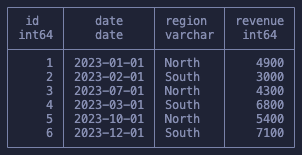
If we took this dataset and ran a GROUP BY sum on the revenue of each region, it would be clear what happens, right? It would result in only two remaining rows, one for each region, and then the sum of the revenues:

The way I want you to view window functions is very similar to this but, instead of reducing the number of rows, the aggregation will run “in the background” and the values will be added to our existing rows.
First, an example:
SELECT
id,
date,
region,
revenue,
SUM(revenue) OVER () as total_revenue
FROM
sales
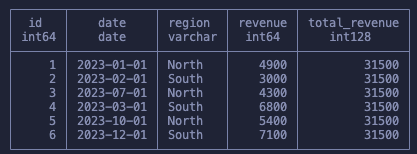
Notice that we don’t have any GROUP BY and our dataset is left intact. And yet we were able to get the sum of all revenues. Before we go more in depth in how this worked let’s just quickly talk about the full syntax before we start building up our knowledge.
The syntax goes like this:
SUM([some_column]) OVER (PARTITION BY [some_columns] ORDER BY [some_columns])
Picking apart each section, this is what we have:
Don’t stress over what each of these means yet, as it will become clear when we go over the examples. For now just know that to define a window function we will use the OVER keyword. And as we saw in the first example, that’s the only requirement.
Moving to something actually useful, we will now apply a group in our function. The initial calculation will be kept to show you that we can run more than one window function at once, which means we can do different aggregations at once in the same query, without requiring sub-queries.
SELECT
id,
date,
region,
revenue,
SUM(revenue) OVER (PARTITION BY region) as region_total,
SUM(revenue) OVER () as total_revenue
FROM sales

As said, we use the PARTITION BY to define our groups (windows) that are used by our aggregation function! So, keeping our dataset intact we’ve got:
We’re also not restrained to a single group. Similar to GROUP BY we can partition our data on Region and Quarter, for example:
SELECT
id,
date,
region,
revenue,
SUM(revenue) OVER (PARTITION BY
region,
date_trunc('quarter', date)
) AS region_quarterly_revenue
FROM sales

In the image we see that the only two data points for the same region and quarter got grouped together!
At this point I hope it’s clear how we can view this as doing a GROUP BY but in-place, without reducing the number of rows in our dataset. Of course, we don’t always want that, but it’s not that uncommon to see queries where someone groups data and then joins it back in the original dataset, complicating what could be a single window function.
Moving on to the ORDER BY keyword. This one defines a running window function. You’ve probably heard of a Running Sum once in your life, but if not, we should start with an example to make everything clear.
SELECT
id,
date,
region,
revenue,
SUM(revenue) OVER (ORDER BY id) as running_total
FROM sales
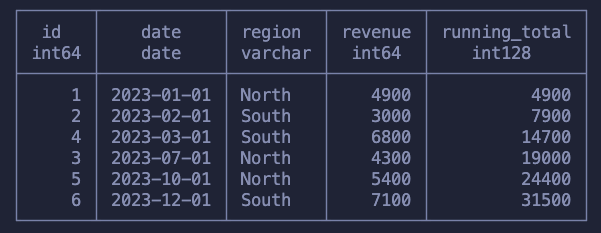
What happens here is that we’ve went, row by row, summing the revenue with all previous values. This was done following the order of the id column, but it could’ve been any other column.
This specific example is not particularly useful because we’re summing across random months and two regions, but using what we’ve learned we can now find the cumulative revenue per region. We do that by applying the running sum within each group.
SELECT
id,
date,
region,
revenue,
SUM(revenue) OVER (PARTITION BY region ORDER BY date) as running_total
FROM sales
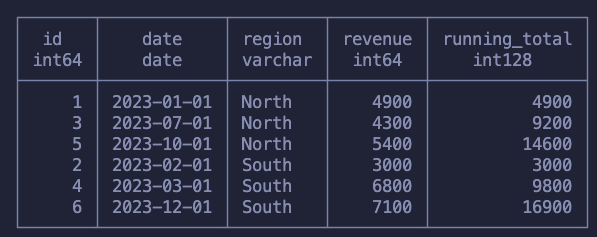
Take the time to make sure you understand what happened here:
It’s quite interesting to notice here that when we’re writing these running functions we have the “context” of other rows. What I mean is that to get the running sum at one point, we must know the previous values for the previous rows. This becomes more obvious when we learn that we can manually chose how many rows before/after we want to aggregate on.
SELECT
id,
date,
region,
revenue,
SUM(revenue) OVER (ORDER BY id ROWS BETWEEN 1 PRECEDING AND 2 FOLLOWING)
AS useless_sum
FROM
sales

For this query we specified that for each row we wanted to look at one row behind and two rows ahead, so that means we get the sum of that range! Depending on the problem you’re solving this can be extremely powerful as it gives you complete control on how you’re grouping your data.
Finally, one last function I want to mention before we move into a harder example is the RANK function. This gets asked a lot in interviews and the logic behind it is the same as everything we’ve learned so far.
SELECT
*,
RANK() OVER (PARTITION BY region ORDER BY revenue DESC) as rank,
RANK() OVER (ORDER BY revenue DESC) as overall_rank
FROM
sales
ORDER BY region, revenue DESC
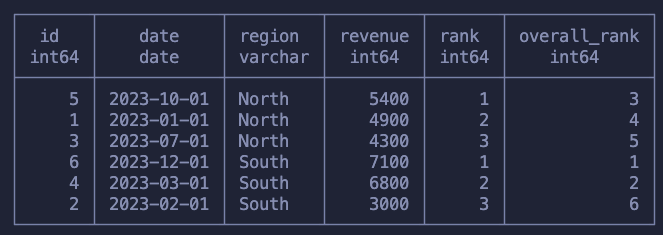
Just as before, we used ORDER BY to specify the order which we will walk, row by row, and PARTITION BY to specify our sub-groups.
The first column ranks each row within each region, meaning that we will have multiple “rank one’s” in the dataset. The second calculation is the rank across all rows in the dataset.
This is a problem that shows up every now and then and to solve it on SQL it takes heavy usage of window functions. To explain this concept we will use a different dataset containing timestamps and temperature measurements. Our goal is to fill in the rows missing temperature measurements with the last measured value.
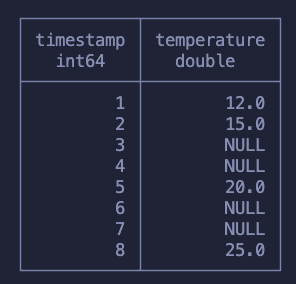
Here is what we expect to have at the end:
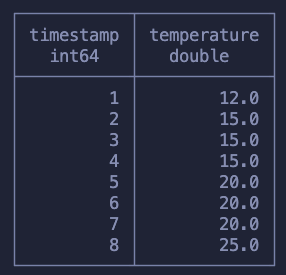
Before we start I just want to mention that if you’re using Pandas you can solve this problem simply by running df.ffill() but if you’re on SQL the problem gets a bit more tricky.
The first step to solve this is to, somehow, group the NULLs with the previous non-null value. It might not be clear how we do this but I hope it’s clear that this will require a running function. Meaning that it’s a function that will “walk row by row”, knowing when we hit a null value and when we hit a non-null value.
The solution is to use COUNT and, more specifically, count the values of temperature measurements. In the following query I run both a normal running count and also a count over the temperature values.
SELECT
*,
COUNT() OVER (ORDER BY timestamp) as normal_count,
COUNT(temperature) OVER (ORDER BY timestamp) as group_count
from sensor
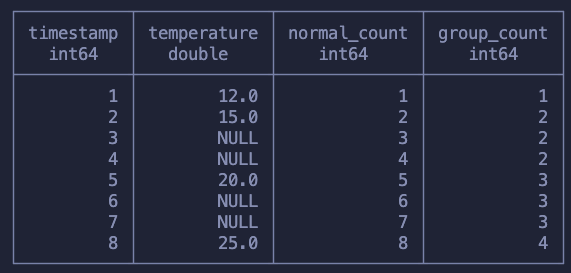
The normal_count column is useless for us, I just wanted to show what a running COUNT looked like. Our second calculation though, the group_count moves us closer to solving our problem!
Notice that this way of counting makes sure that the first value, just before the NULLs start, is counted and then, every time the function sees a null, nothing happens. This makes sure that we’re “tagging” every subsequent null with the same count we had when we stopped having measurements.
Moving on, we now need to copy over the first value that got tagged into all the other rows within that same group. Meaning that for the group 2 needs to all be filled with the value 15.0.
Can you think of a function now that we can use here? There is more than one answer for this, but, again, I hope that at least it’s clear that now we’re looking at a simple window aggregation with PARTITION BY .
SELECT
*,
FIRST_VALUE(temperature) OVER (PARTITION BY group_count) as filled_v1,
MAX(temperature) OVER (PARTITION BY group_count) as filled_v2
FROM (
SELECT
*,
COUNT(temperature) OVER (ORDER BY timestamp) as group_count
from sensor
) as grouped
ORDER BY timestamp ASC
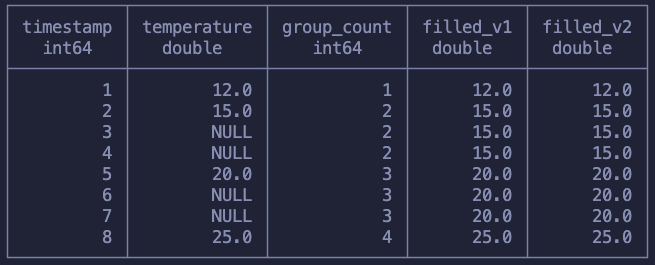
We can use both FIRST_VALUE or MAX to achieve what we want. The only goal is that we get the first non-null value. Since we know that each group contains one non-null value and a bunch of null values, both of these functions work!
This example is a great way to practice window functions. If you want a similar challenge try to add two sensors and then forward fill the values with the previous reading of that sensor. Something similar to this:
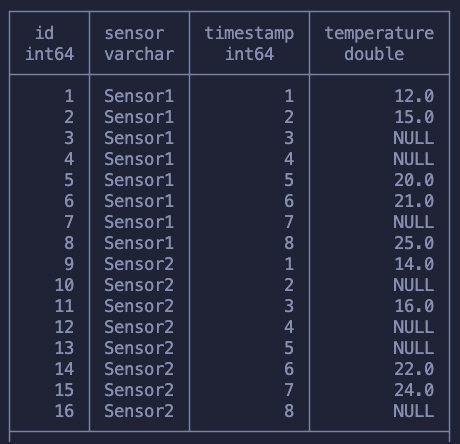
Could you do it? It doesn’t use anything that we haven’t learned here so far.
By now we know everything that we need about how window functions work in SQL, so let’s just do a quick recap!
This is what we’ve learned:
I hope this helped you understand how window functions work and helps you apply it in the problems you need to solve.
All images by the author unless stated otherwise
Understand SQL Window Functions Once and For All was originally published in Towards Data Science on Medium, where people are continuing the conversation by highlighting and responding to this story.
Originally appeared here:
Understand SQL Window Functions Once and For All
Go Here to Read this Fast! Understand SQL Window Functions Once and For All
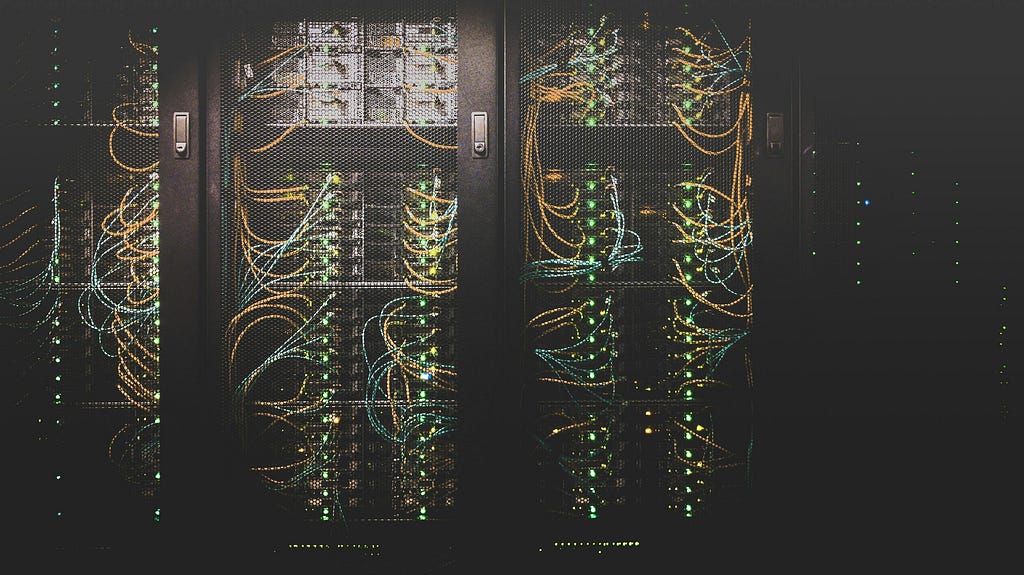
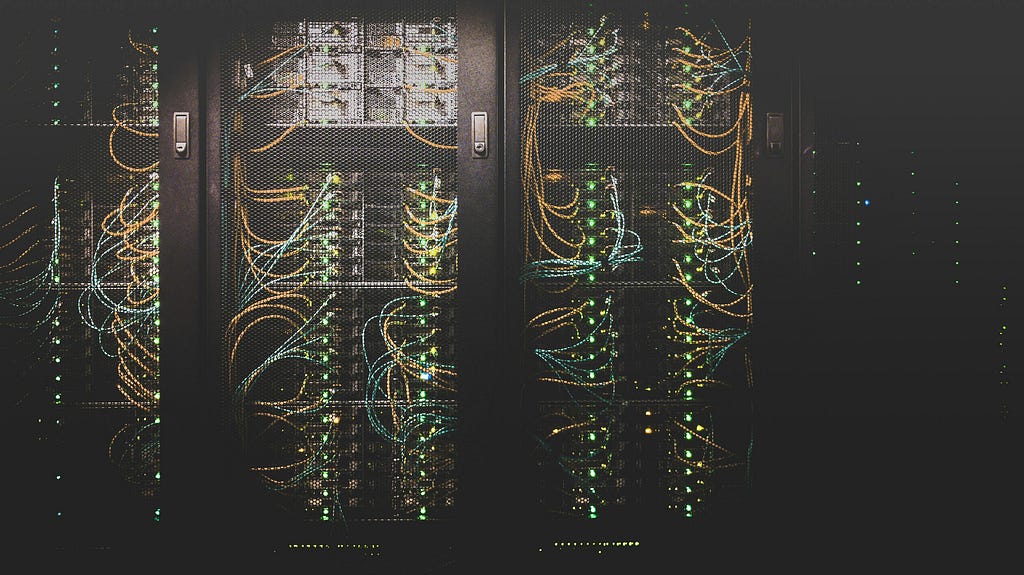

When we think of algorithms, we often describe them as similar to a recipe: a series of steps we follow to complete some task. We frequently use that definition when writing code, breaking down what must be done into smaller steps and writing code that executes them.
Although that intuitive notion of algorithm serves us well most of the time, having a formal definition allows us to do even more. With it, we can prove that some problems are fundamentally unsolvable, have a common ground for comparing and analyzing algorithms, and develop new ones. Nowadays, the Turing Machine is what typically fills that spot.
Until the beginning of the 20th century, even mathematicians didn’t have a formal definition of what an algorithm was. Much like most of us do today, they relied on that same intuitive concept: a finite number of steps by which a function could be effectively calculated.
This became a limiting factor for mathematics in the last century. In 1928, David Hilbert, alongside Wilhelm Ackermann, proposed the decision problem, or the Entscheidungsproblem in German. The problem went as follows:
Is there an algorithm that can definitely answer “yes” or “no” to any mathematical statement?
This question couldn’t be answered without a proper definition of algorithm. Even before this, in 1900, Hilbert had also proposed 23 problems as challenges for the century to come, one of which ran into the same issue. The lack of a formal notion had already been plaguing mathematicians for a while.
Around 1936, two separate solutions to the Entscheidungsproblem were published independently. To solve it, they each proposed a method for how to define an algorithm. Alan Turing gave birth to the Turing Machine and Alonzo Church invented λ-Calculus. Both reached the same conclusion: the algorithm hypothesized by Hilbert and Ackermann couldn’t exist.
The two descriptions were equivalent in terms of power. That is, anything that could be described by a Turing machine could be described by λ-calculus and vice-versa. We tend to prefer Turing’s definition when discussing computer theory but assume both to be perfectly sufficient methods of describing an algorithm. This is known as the Church-Turing thesis.
A function can only be calculated by an effective method if it is computable by a Turing machine (or λ-calculus).
In simple terms, one can think of a Turing machine as a black box that receives a string of characters, processes it in some way, and returns whether it either accepts or denies the input.
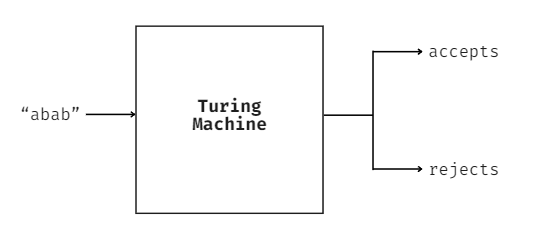
This may seem strange at first, but it’s common in low-level languages like C, C++, or even bash script. When writing code in one of these languages, we often return 0 at the end of our script to signify a successful execution. We may have it instead return a 1 in case of a generic error.
#include <stdio.h>
int main()
{
printf("Hello World!");
return 0;
}
These values can then be checked by the operating system or other programs. Programming languages also allow for the return of numbers greater than 1 to specify a particular type of error but the general gist is still the same. As for what it means for a machine to accept or reject a certain input, that’s entirely up to the one who designed it.
Behind the curtain, the machine is made up of two core components: a control block and a tape. The tape is infinite and corresponds to the model’s memory. The control block can interact with the tape through a moving head that can both read from and write into the tape. The head can move left and right across the tape. It can go infinitely into the right but can’t go further left than the tape’s starting element as the tape only expands indefinitely towards one side.

At first, the tape is empty, filled only with blank symbols (⊔). When the machine reads the input string, it gets placed at the leftmost part of the tape. The head is also moved to the leftmost position, allowing the machine to start reading the input sequence from there. How it goes about reading the input, whether it writes over it, and any other implementation details are defined in the control block.
The control block is made up of a set of states interconnected by a transition function. The transitions defined in the transition function specify how to move between states depending on what is read from the tape, as well as what to write onto it and how to move its head.

In the transition above, the first term refers to what is being read from the tape. Following the arrow, the next term will be written on the tape. Not only does the tape allow for any of the characters in the input to be written on it, but it also permits the usage of additional symbols present only in the tape. Following the comma, the last term is the direction in which to move the head: R means right and L means left.
The diagram below describes the inner workings of a Turing machine that accepts any string of at least 2 in length that starts and ends with 0, with an arbitrary amount of 1s in the middle. The transitions are placed next to arrows that point from one state to another. Every time the machine reads a character from the tape, it will check all the transitions that leave its current state. Then, it transitions along the arrow containing that symbol into the next state.
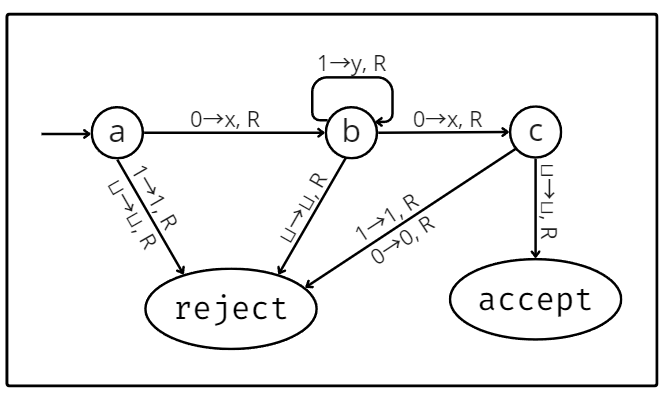
The Turing machine has 3 special states: a starting, an acceptance, and a rejection state. The starting state is indicated in the diagram by an arrow that only connects on one end and, as the name suggests, is the state the machine starts in. The remaining 2 states are equally straightforward: if the machine reaches the acceptance state, it accepts the input, and if it reaches the rejection state, it rejects it. Note that it may also loop eternally, without ever reaching either of them.
The diagram used was one for a deterministic Turing machine. That means every state had a transition leaving it for every possible symbol it may have read from the tape. In a non-deterministic Turing machine, this wouldn’t be the case. It is one of many Turing machine variations. Some may adopt more than one tape, others may have a “printer” attached, etc. The one thing to keep in mind with variations of the model is that they’re all equivalent in terms of power. That is, anything that any Turing machine variation can compute can also be calculated by the deterministic model.
The picture below is of a simple physical model of a Turing machine built by Mike Davey. It has a tape that can be moved left or right by two rotating motors and at its center lies a circuit that can read from and write onto the tape, perfectly capturing Turing’s concept.
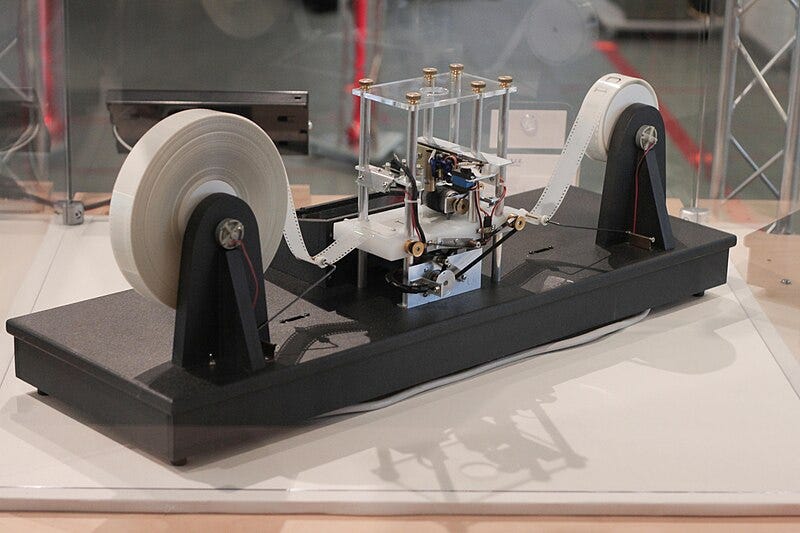
Despite being simple, Turing machines are mighty. As the modern definition of an algorithm, it boasts the power to compute anything a modern computer can. After all, modern computers are based on the same principles. One might even refer to them as highly sophisticated real-world implementations of Turing machines.
That said, the problems dealt with by modern computers and the data structures used to tackle them are often much more complex than what we’ve discussed. How do Turing machines solve these problems? The trick behind it is encoding. No matter how complex, any data structure can be represented as a simple string of characters.
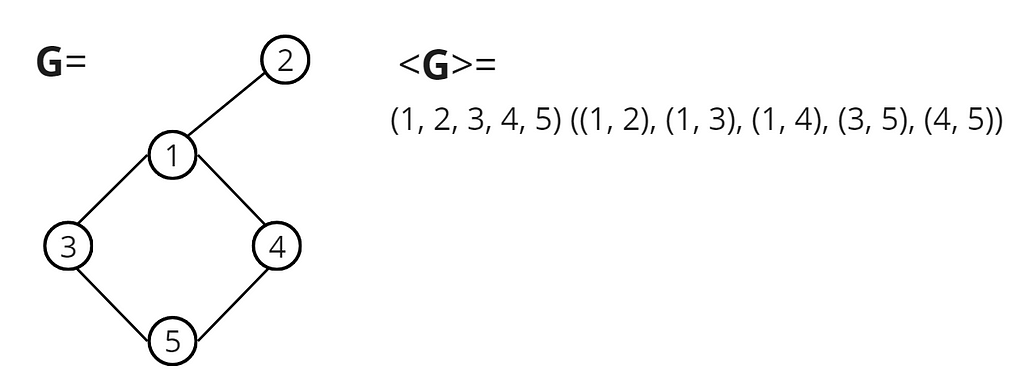
In the example above, we represent an undirected connected graph as a list of nodes followed by a list of edges. We use parenthesis and commas to isolate the individual nodes and edges. As long as the algorithm implemented by the Turing machine considers this representation, it should be able to perform any graph-related computations done by modern computers.
Data structures are stored in much the same way in real computers — just strings consisting of ones and zeros. In the end, at the barest level, all modern computers do is read and write strings of bits from and onto memory while following some logic. And, in doing so, they allow us to solve all kinds of problems from the barest to the highest complexity.
Understanding Turing machines and how they work provides helpful insight into the capabilities and limitations of computers. Beyond giving us a solid theoretical foundation to understand the underpinnings of complex algorithms, it allows us to determine whether an algorithm can even solve a given problem in the first place.
They are also central to complexity theory, which studies the difficulty of computational problems and how many resources, like time or memory, are required to solve them. Analyzing the complexity of an algorithm is an essential skill for anyone who works with software. Not only does it allow for the development of more efficient models and algorithms, as well as the optimization of existing ones, but it’s also helpful in choosing the right algorithm for the job.
In conclusion, a deep comprehension of Turing machines not only grants us a profound understanding of computers’ capabilities and boundaries but also gives us the foundation and tools necessary to ensure the efficiency of our solutions and drive innovation forward.
Introduction to the Theory of Computation
What Exactly Is An Algorithm? Turing Machines Explained was originally published in Towards Data Science on Medium, where people are continuing the conversation by highlighting and responding to this story.
Originally appeared here:
What Exactly Is An Algorithm? Turing Machines Explained
Go Here to Read this Fast! What Exactly Is An Algorithm? Turing Machines Explained


Originally appeared here:
Simple guide to training Llama 2 with AWS Trainium on Amazon SageMaker
Go Here to Read this Fast! Simple guide to training Llama 2 with AWS Trainium on Amazon SageMaker
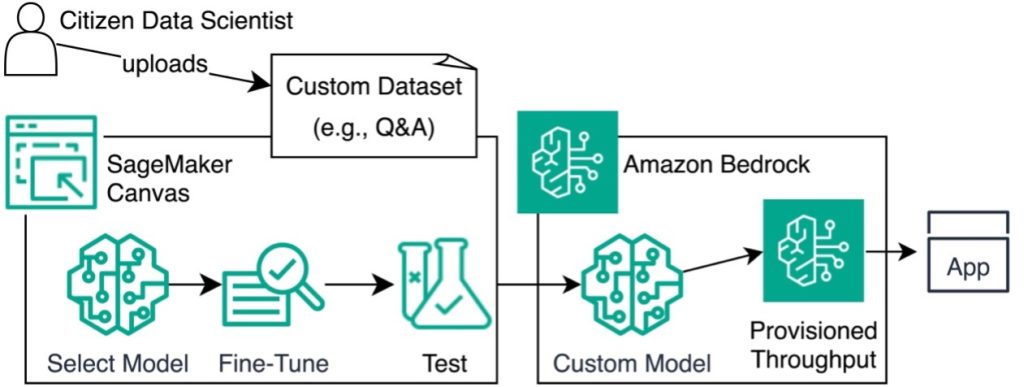

Originally appeared here:
Fine-tune and deploy language models with Amazon SageMaker Canvas and Amazon Bedrock

Originally appeared here:
Improving inclusion and accessibility through automated document translation with an open source app using Amazon Translate